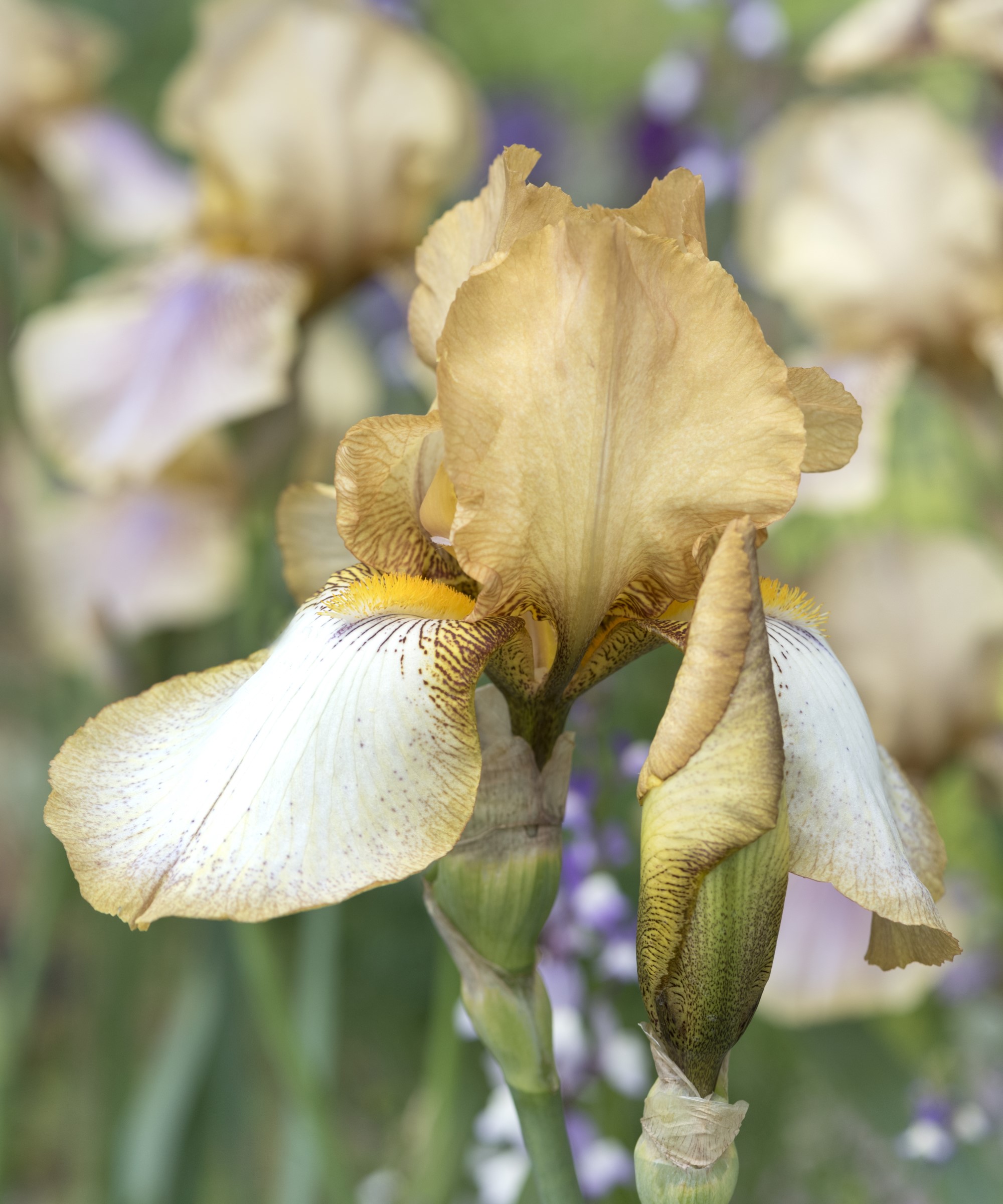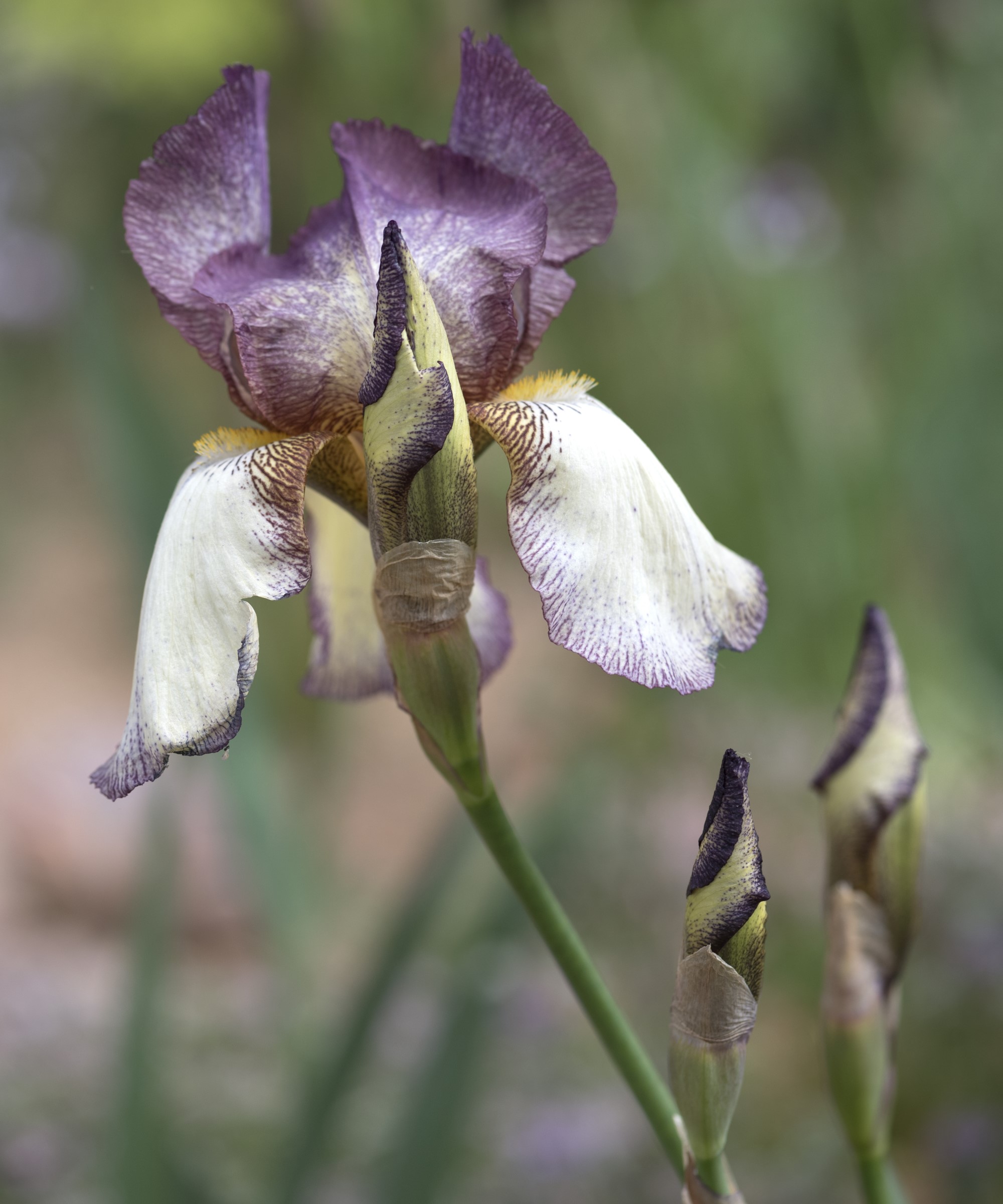Should you deadhead irises? Experts discuss the benefits of removing old flowers
Learn the best time to deadhead irises for the benefit of your plants


There are hundreds of iris species, and countless cultivars, in the world, coming in a wide variety of colors. The blooms put on a spectacular show in May and June each year and the flower stalks should be removed after flowering.
Deadheading is not often regarded as an essential task when it comes to irises, however there is a real importance to doing it. If you deadhead irises, the plant focuses energy into extended blooming and strengthening the rhizome and it can help maintain overall plant health.
If you are learning how to grow irises or how to grow bearded irises, then deadheading should be firmly on your to-do list. It is a very quick and simple job to learn and carry out and can even help some types of iris to put on a second flush of flowers.

There are around 300 species of iris globally
Do you deadhead irises?
Many irises bloom only once each year, but there are some varieties of bearded iris that can rebloom. Whether or not the plant can be encouraged to flower again, all can benefit from deadheading, a common task of removing spent flower blooms from plants in the backyard.
There may be lots of sceptical gardeners who see little point in deadheading irises that flower just once a year. However, David Cohen, the CEO of wholesale flower suppliers Badais International, claims deadheading can offer ‘several benefits’ to iris growers, including an ‘extended blooming period’ and a ‘neater’ appearance.
He says: ‘Deadheading an iris helps redirect the plant's energy from seed production to continued flower production. This can extend the blooming period, allowing you to enjoy the iris's vibrant flowers for a longer time.
‘Removing faded flowers also improves the overall appearance of the iris plant and the garden. It eliminates the presence of withered blooms, promoting a cleaner and more aesthetically pleasing look.’
Design expertise in your inbox – from inspiring decorating ideas and beautiful celebrity homes to practical gardening advice and shopping round-ups.
As well as diverting energy from producing seeds to flowers, deadheading iris also helps to focus resources into strengthening the rhizomes. By removing spent flowers, it also promotes better air circulation around the plant and reduces the risk of diseases, such as botrytis.
Deadheading irises primarily works in a similar way to deadheading peonies, where the plant benefits from improved overall health and a reduced incidence of common fungal diseases. This is rather than keeping more flowers coming over a long period that occurs with many other plants, such as when you deadhead geraniums.

Irises bloom between mid-spring and summer
When and how to deadhead irises
It is best to regularly inspect your iris during the blooming season to quickly identify and remove any spent flower blooms. The correct time to deadhead irises is to remove flower heads a few days after they have faded.
Tony O'Neill, an experienced gardener and author, says that deadheading can ‘greatly benefit’ your irises and outlines a four-point guide for how to deadhead irises.
It is essential to use clean and sharp pruning shears or scissors when deadheading. Keeping tools sharp and cleaning garden tools regularly helps ensure clean cuts and lessens the chances of plants getting infected by diseases. A blade sharpener, such as this Felco Sharpening Tool available at Amazon, is ideal for keeping pruning shears sharp and cutting properly.
- Wait until the flowers have completely faded and withered, then locate the flower stalk that held the bloom
- Follow the stem down to where it emerges from the foliage and make a clean cut at the base, ensuring not to damage the leaves or any emerging flower buds nearby
- Removing the entire flower stalk rather than just the individual blooms is best
- Remember to dispose of the removed flower stalks properly, as they can harbor pests or diseases

Tony O'Neill is a passionate gardener and the author of Composting Masterclass, available at Amazon, and Your First Vegetable Garden. He runs the website Simplify Gardening along with a successful YouTube channel to educate people on various gardening topics.
FAQs
How do I get my irises to bloom more than once?
Those irises types that can bloom more than once, such as certain bearded iris varieties, will benefit from deadheading. Ensuring to remove spent flower stalks quickly will give the most time to bloom again and a feed with fertilizer that is low in nitrogen around a month after the first flush of flowers will further increase the chances of a second bloom.
Irises are heavy feeders so they will need lots of water as well as the feed to have the energy to bloom again. One example of a fertilizer that is suited to a summer iris feed is the Dr. Earth Plant Food available at Walmart.
What to do with irises when they have finished flowering?
After irises have finished flowering it is time to remove flower stems but leave the foliage. The time to cut back irises fully is at the end of the season after the first frosts. Irises benefit from being splitted as congested clumps will mean less flowers. The best time to split irises is after the flowering has ended, ideally around six weeks after the plants have finished their blooming for the season.
Irises are fantastic additions to any cottage garden ideas and are a delight to see in full bloom in spring and early summer. Deadheading them may not be a traditional task, but it does offer substantial benefits to the plants and is well worth doing. You deadhead many other flowering plants, so why not start adding your irises to that list too.

Drew has worked as a writer since 2008 and was also a professional gardener for many years. As a trained horticulturist, he worked in prestigious historic gardens, including Hanbury Hall and the world-famous Hidcote Manor Garden. He also spent time as a specialist kitchen gardener at Soho Farmhouse and Netherby Hall, where he grew vegetables, fruit, herbs, and cut flowers for restaurants. Drew has written for numerous print and online publications and is an allotment holder and garden blogger. He is shortlisted for the Digital Gardening Writer of the Year at the 2025 Garden Media Guild Awards.